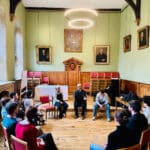Le Tour de St Edmund
10 Oct 2022
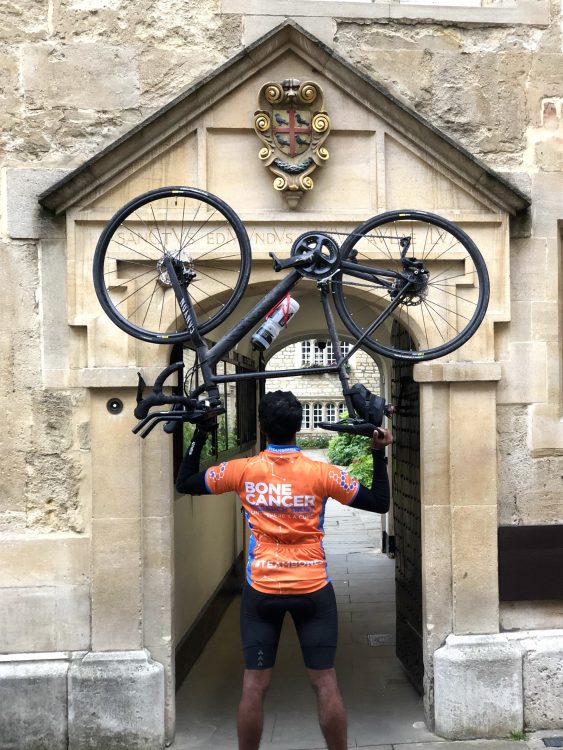
The Matt Greenwood Travel Scholarships were established in 2017 by the students, staff, alumni and friends of the Hall in memory of Matt Greenwood (2013, Engineering). Each year, a prize of up to £1000 is awarded for travel in the UK or anywhere in the world for good purposes, with a particular emphasis on projects which embody Matt’s gifts of courage, adventure and concern for others.
This year, Raghul Ravichandran (Raggy) (2019, DPhil Engineering Science) was awarded funds to support his travel by bicycle along the landmarks of the life of the College’s founder, St Edmund of Abingdon. Raghul cycled 800km from St Edmund’s tomb in Pontigny, France to his birthplace in Abingdon, Oxfordshire. He raised approximately £4,200 for the Bone Cancer Research Trust and Kidneys for Life charities.
Raggy writes:
The cycle along the route of the life of St Edmund of Abingdon was initially an off-the-cuff suggestion to a group of friends at the Teddy Hall bar at the start of the year. This pretty quickly snowballed into a realistic route based on cycling range and cities of interest:
• Pontigny – home to the abbey containing St Edmund’s Tomb;
• Paris – where he studied and taught, as well as the location of the famous Cisterian Collège des Bernardins, where his students were particularly influential;
• Canterbury – where he served as Archbishop during Henry III’s reign;
• Abingdon – his site of birth and education;
• Oxford – where he founded a small academic hall, of which some of you may have heard about.
Extra historical context was given by Professor Henrike Lähnemann, who was particularly keen for me to keep an eye out for the distinctive architecture of the Cistercian Order. One ferry ticket and a later and we were ready to go: I was on my bike, while Philippa was in the official ‘Tour de St Edmund Support Car’.
Days 1-2: Pontigny to Paris via Fontainebleau
We drove out to Pontigny Abbey, tucked away in the outskirts of Auxerre: the ‘Gateway to Burgundy’. The abbey itself was quiet and beautiful with the old cobbled paths outside, and the tall white-walled interior stretching far above us. St Edmund’s tomb was placed in an ornate shrine above the main altar, with a small descriptive plaque.
The start of the trip was exciting and difficult, simply due to the unfamiliar roads and area. I explored every small town I passed through, sampling delicious pastries of the traditional boulangeries and adhering to the golden rule of endurance sport: food is fuel. Yes, that includes chocolate eclairs for lunch. No, not if you’re in the support car.
Perhaps the best pit stop of the trip was the ‘Basilica’ of Saint Mathurin: a gothic church in part-ruin, dwarfing the tiny village that surrounds it. I stumbled upon the church accidentally, but stopped for a couple of pictures under the nesting pigeons and collapsed roof.
The route from Pontigny started as deep woodland, with a healthy number of friendly pelotons whizzing past during the French bank holiday weekend. This slowly transitioned to highly cobbled side streets, as I avoided the main traffic arteries into Paris. Cycling in central Paris was absolute chaos (though a lot of fun), where clearly traffic laws were optional for some people.
We were able to stay in central Paris thanks to the kind generosity of Fr Mark Osborne and Fr Jeffrey John of Saint George’s Anglican Church, and by chance met Aularian and Honorary Fellow Sir John Daniel after the Sunday service.
Days 3-6: Paris to Canterbury via Beauvais, Amiens, and Montreuil-sur-Mer
The route from Paris to Calais involved small roads through stereotypical small villages in the French countryside. It was here that I gained a huge appreciation for cycling in France compared to the UK: the small country roads were very well-maintained (take note Oxfordshire County Council), and drivers were generally patient and friendly.
The Normandy region of France was mostly agricultural, quite flat, and adorned with wind farms scattered across the landscape. Watching the turbines rise and fall over the horizon was fantastic, but only when they were pointing the right way (i.e. when the wind was helping me along)! This section of the route had the hardest days of the cycling trip where I battled constant headwinds with no cover. The best views were along the final stretch to Calais, where it became increasingly hilly but boasted blue skies and excellent tarmac.
Since the route was quite rural, navigation was a bit more tricky. A huge thanks to my GPS system for thinking that paved roads and agricultural access tracks are the same thing; I’m genuinely impressed that my road bike held together for miles of rocky dirt paths and fields.
During the evenings, we managed to do a small amount of exploration: Beauvais Cathedral and market (more pastries!); preserved WW1 trenches and war graves in the Somme valley; the cold beach at Berck; being yelled at by old ladies for cycling on top of the walls of a 800 year old citadel at Montreuil, which incidentally was part of our youth hostel.
Days 7-8: Canterbury to Oxford via Canterbury, London and Abingdon
We dropped back onto the shores of the UK with a Spitfire flypast at Dover for the late Queen’s jubilee weekend. Every road from Dover to Canterbury was the name of a hill (to the detriment of my quads), and every hill had a village decorated with Union Jack bunting.
Another thanks to Fr Max Kramer at Canterbury Cathedral, now chaplain at Keble College, for his generosity and company in letting us stay with him inside the walls of the Cathedral grounds.
Cycling in and out of London was busy. Due to the jubilee road closures, we avoided the most direct route through central London and detoured south of the Thames instead. There, I had my first and only mechanical breakdown: a rear hydraulic brake failure, locking the brake onto the wheel. I encountered yet another moment of kindness in the form of a bike store owner who graciously donated a late evening brake service and bike-check, getting me back on the road again. Thank you to Jono at Kemsing Bikes in Sevenoaks for your generosity and expertise.
After spending the last of my legs crossing the Chiltern Hills, it was time to take the story full circle, to the site of St Edmund’s birth at St Edmund’s Lane in Abingdon. In the town centre, there was a huge throng of people trying to intercept currant buns launched from the top of the County Hall. A bit perplexed, I detoured around, but not before catching one in my helmet: the last of the journey’s snacks. I later learned the bun throwing is carried out on every occasion of a royal event.
Pulling back into Oxford was a bit of dream, reaching Teddy Hall at around 6pm, and then going for a curry down Cowley Road straight after. It was good to be back.
Acknowledgements
I’d like to thank everyone else who supported the journey: St Edmund Hall, and Michaela and Peter Greenwood for enabling the journey through the Travel Scholarship in Matt’s name. Thanks to Philippa for her official support car services in the form of endless patience, snacks and photos; and for her help in organising things I didn’t even know that needed organising. Thank you to Mum and Dad for their encouragement and advice before, during and after the trip.
Thank you also to the college chaplain, Revd Dr Zachary Guiliano, for reaching out to help us organise accommodation in Paris and Canterbury; and to Subha Aunty and Dhileep Uncle for hosting us in London. Lastly, a massive thanks to everyone that supported the fundraiser; I read through all the messages of kindness and encouragement, and kept them with me through the endless hill climbs, headwinds and questionable terrain.
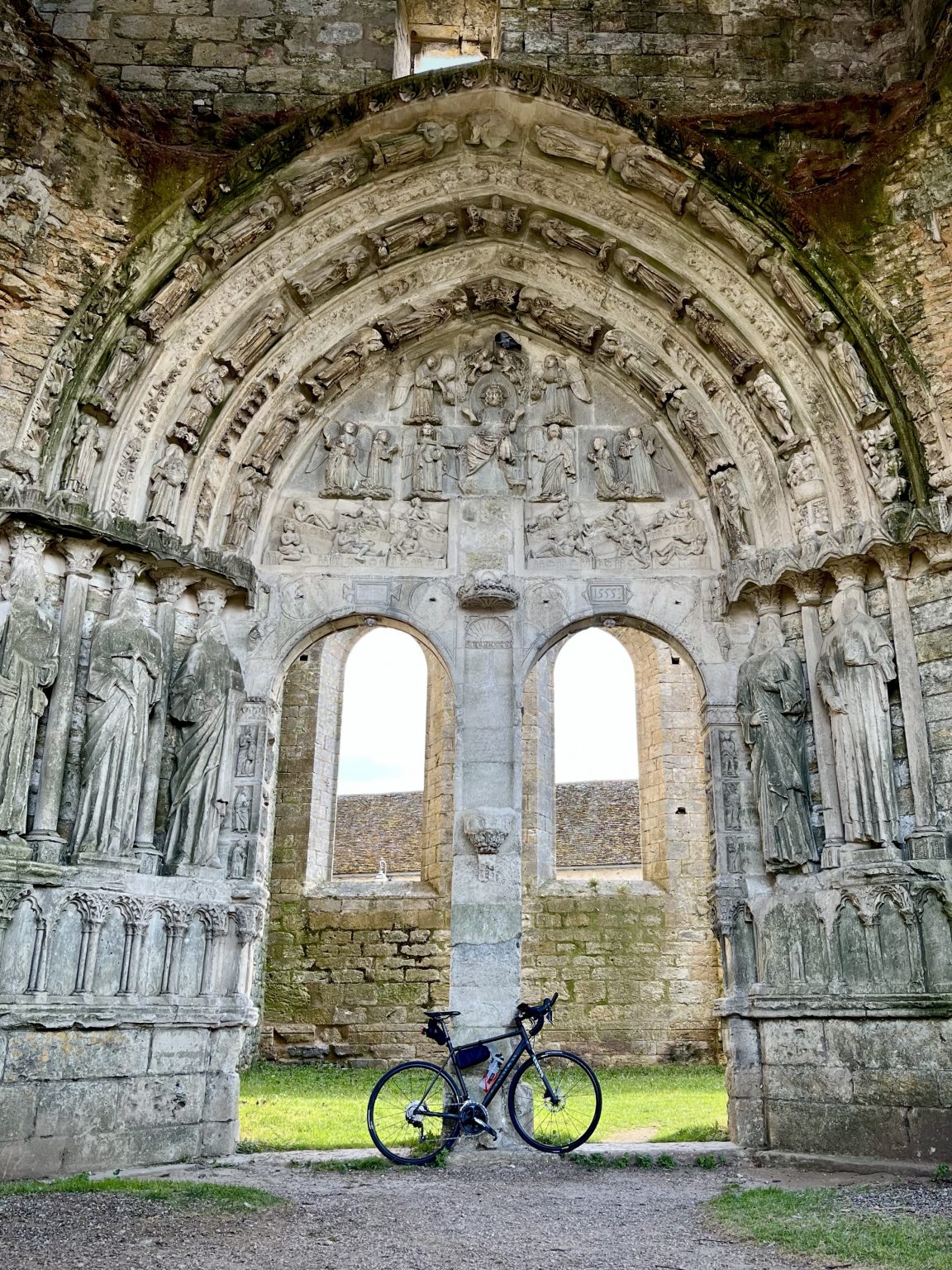
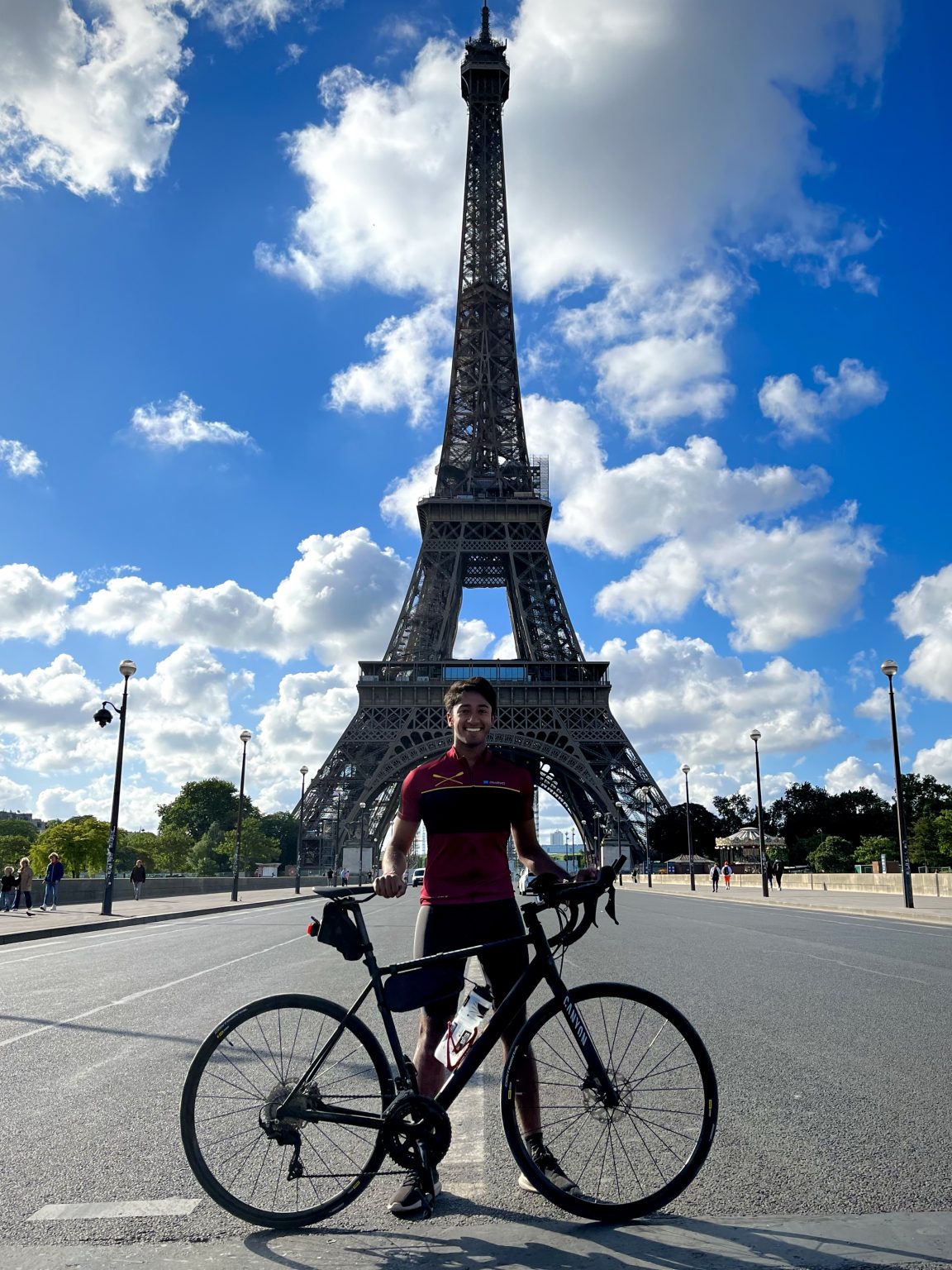
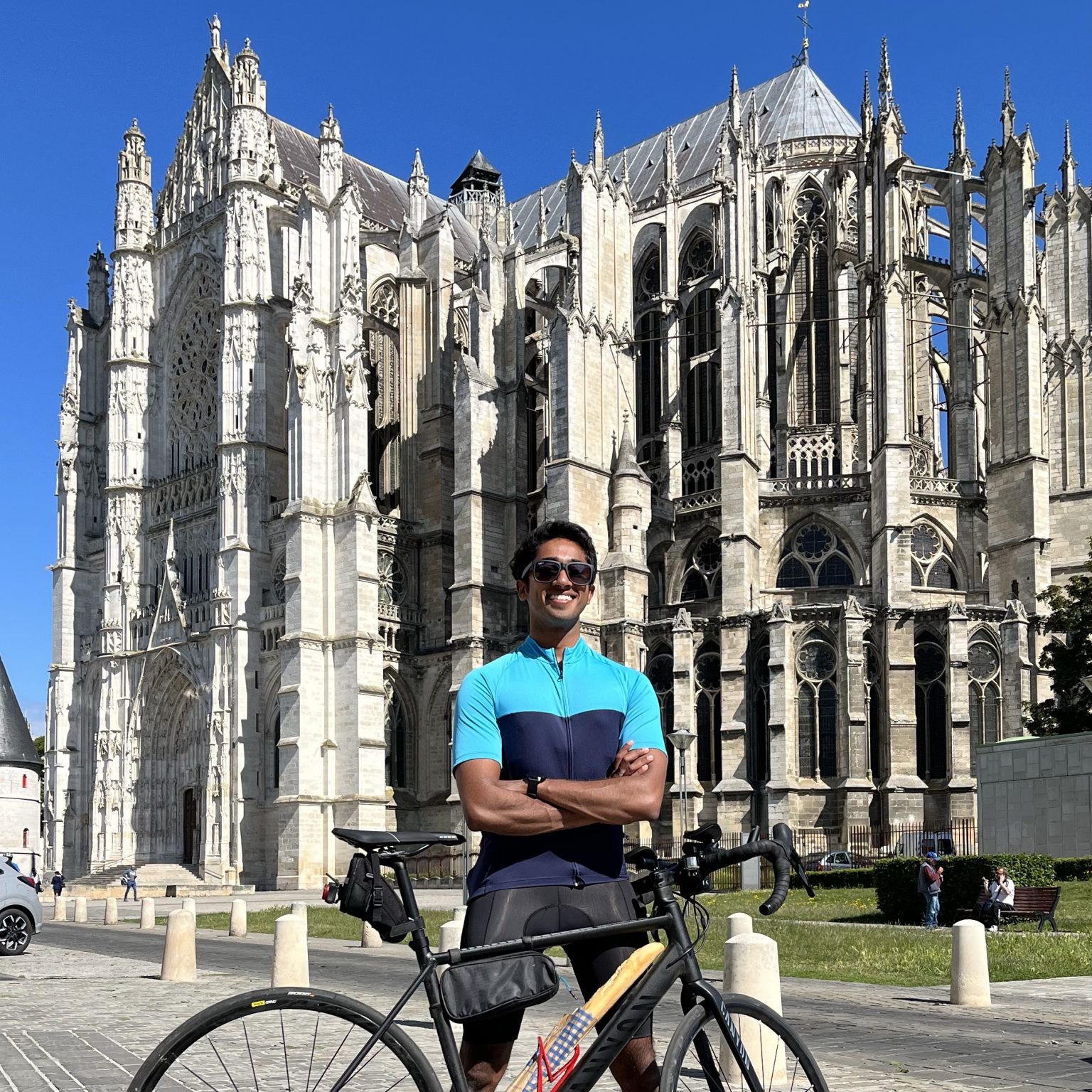
Categories
Other News
